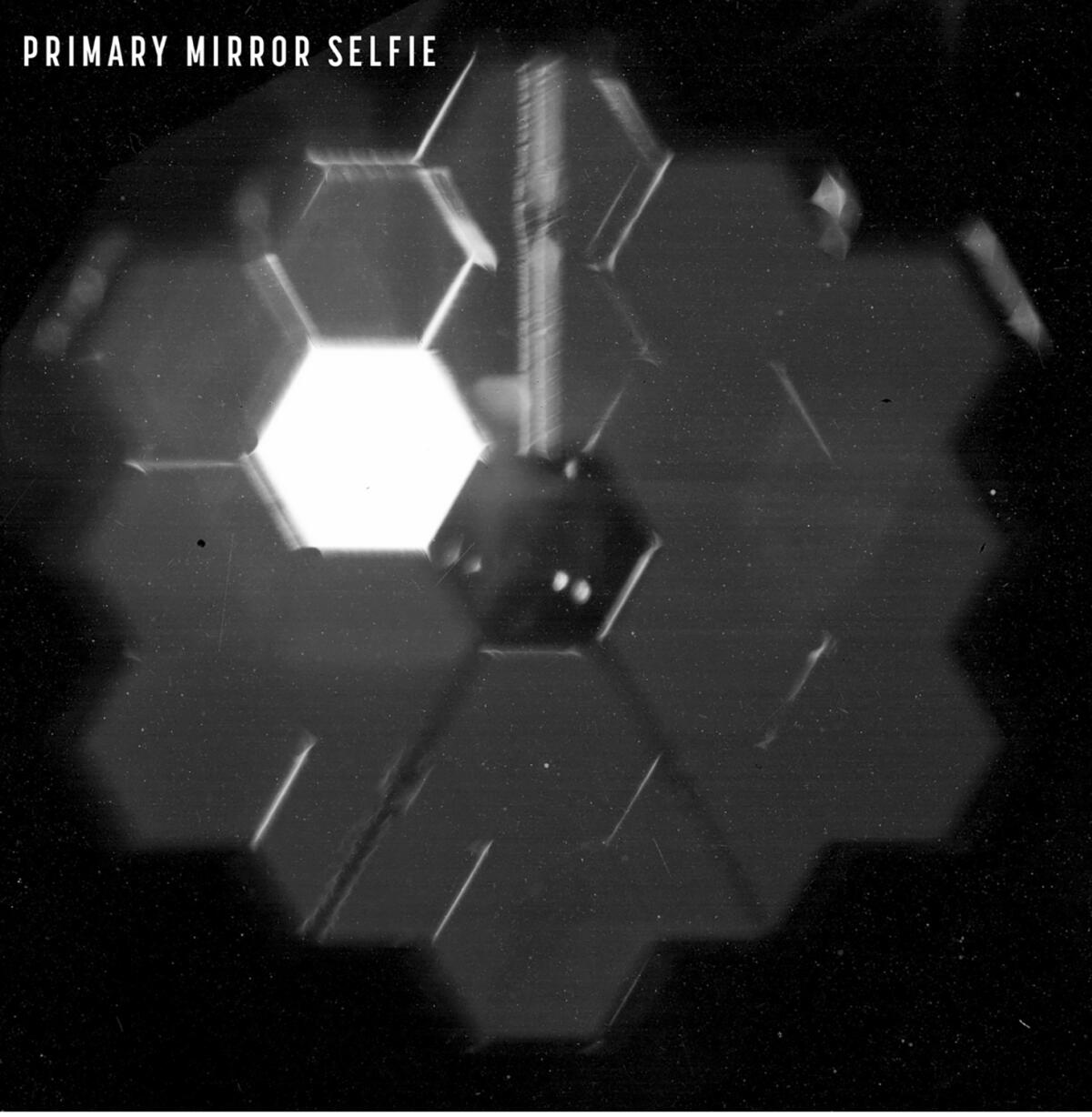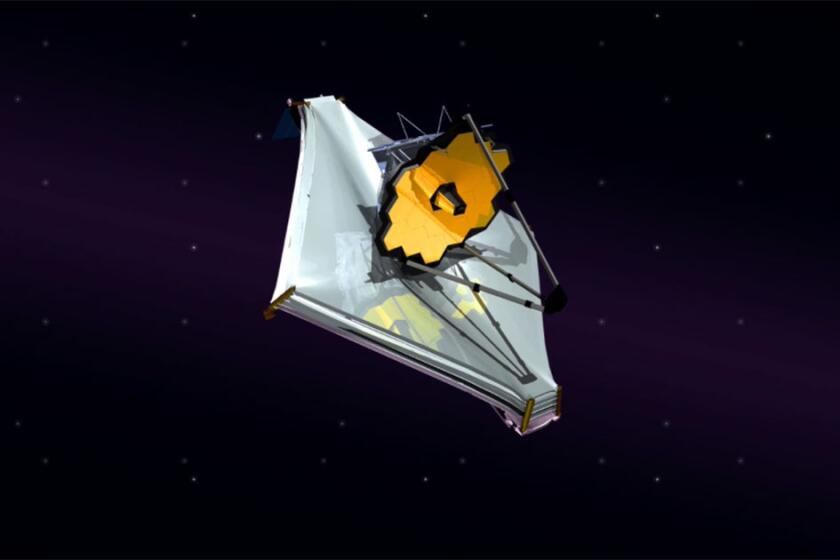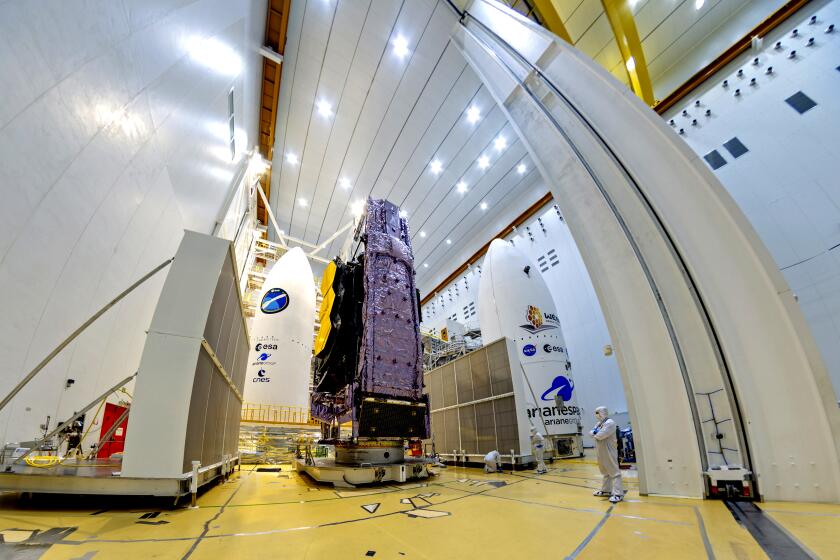NASA’s new space telescope sees its first starlight, takes selfie

- Share via
CAPE CANAVERAL, Fla. — NASA’s new space telescope has captured its first starlight and even taken a selfie of its giant, gold mirror.
All 18 segments of the primary mirror on the James Webb Space Telescope seem to be working properly 1½ months into the mission, officials said Friday.
The telescope’s first target was a bright star 258 light-years away in the constellation Ursa Major.
“That was just a real wow moment,” said Marshall Perrin of the Space Telescope Science Institute in Baltimore.
The telescope will be able to peer into the farthest reaches of space. The data it collects will allow scientists to better understand the formation of stars and galaxies.
Over the next few months, the hexagonal mirror segments — each the size of a coffee table — will be aligned and focused to function as one, allowing science observations to begin by the end of June.
The $10-billion infrared observatory — considered the successor to the aging Hubble Space Telescope — will seek light from the first stars and galaxies that formed in the universe nearly 14 billion years ago. It will also examine the atmospheres of alien worlds for signs of life.
NASA did not detect a crippling flaw in Hubble’s mirror until after its 1990 launch; more than three years passed before spacewalking astronauts were able to correct the telescope’s blurry vision.
Everything is looking good so far with Webb, and engineers should be able to rule out any major mirror flaws by next month, Feinberg said.
The James Webb Space Telescope launches to space Christmas Day, the culmination of two decades of work: ‘It feels like we sprinted a marathon.’
Webb’s 21-foot, gold-plated mirror is the largest ever launched into space. An infrared camera on the telescope snapped a picture of the mirror as one segment gazed upon the targeted star.
“Pretty much the reaction was, ‘Holy cow!’” Feinberg said.
NASA released the selfie, along with a mosaic of starlight from each of the mirror segments. The 18 points of light resemble bright fireflies flitting against a black night sky.
After 20 years with the project, “it is just unbelievably satisfying” to see everything working so well so far, said the University of Arizona’s Marcia Rieke, principal scientist for the infrared camera.
Webb blasted off from South America in December and reached its designated perch 1 million miles away last month.








